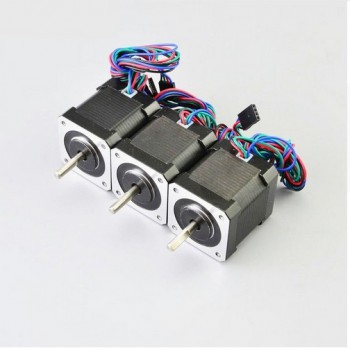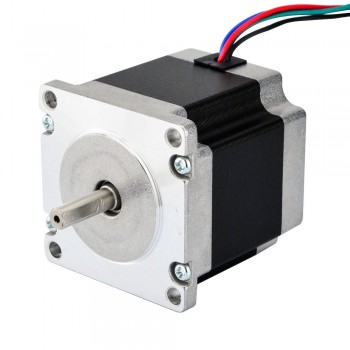The original model of a stepper motor originated in the late 1990s from 1830 to 1860. With the development of permanent magnet materials and semiconductor technology, stepper motors quickly developed and matured. In the late 1960s, China began researching and manufacturing stepper motors. From then until the late 1960s, a small number of products were mainly developed by universities and research institutes for the research of certain devices. Starting from the early 1970s, breakthroughs were made in production and research. From the mid-1970s to the mid-1980s, it entered a stage of development, and various high-performance products were continuously developed. After the mid-1980s, due to the development and research of hybrid stepper motors, the technology of hybrid stepper motors in China, including body technology and drive technology, gradually approached the level of foreign industries. The application of various hybrid stepper motors and their drivers gradually increased.
Stepping motors can be classified into reactive stepping motors, permanent magnet stepping motors, and hybrid stepping motors according to their structure. What are the advantages and disadvantages of these three types of motors?
Reactive stepper motor: The stator has windings and the rotor is composed of soft magnetic materials. It has simple structure, low cost, small step angle, and up to 1.2 °, but it has poor dynamic performance, low efficiency, high heat generation, and it is difficult to ensure reliability.
Permanent magnet stepper motor: The rotor of a permanent magnet stepper motor is made of permanent magnet material, and the number of poles in the rotor is the same as that in the stator. Its characteristics are good dynamic performance and large output torque, but this type of motor has poor accuracy and a large step angle (usually 7.5 ° or 15 °).
Hybrid stepper motor: hybrid stepper motor combines the advantages of reactive and permanent magnet, with multiphase windings on the stator, permanent magnet materials on the rotor, and multiple small teeth on the rotor and stator to improve step accuracy. Its characteristics are high output torque, good dynamic performance, small step angle, but complex structure and relatively high cost.

The development of the hybrid stepper motor industry needs to break through innovation bottlenecks. The development trend of hybrid stepper motors is that intelligence and ecology will become new standards and highlights. This trend can be seen from three levels. The first is the customer's requirements. The requirements for hybrid stepper motors and services are becoming increasingly high among practitioners. The second is the government's management goal, initially only targeting enterprises. Doing a good job in laying the foundation of the industry is enough, but not yet. In addition to high-quality infrastructure operators, we also need clear direction guidance in industry norms, industry prospects, industry trends, and other aspects, and management requirements are constantly improving. The third is the expectations of investors. It is difficult to increase the product value of low-end technology now, so many companies are changing their cages to improve quality and value through industrial upgrading. Therefore, hybrid stepper motors need to continuously improve their innovation capabilities, break through industry bottlenecks, and achieve high-quality development.

